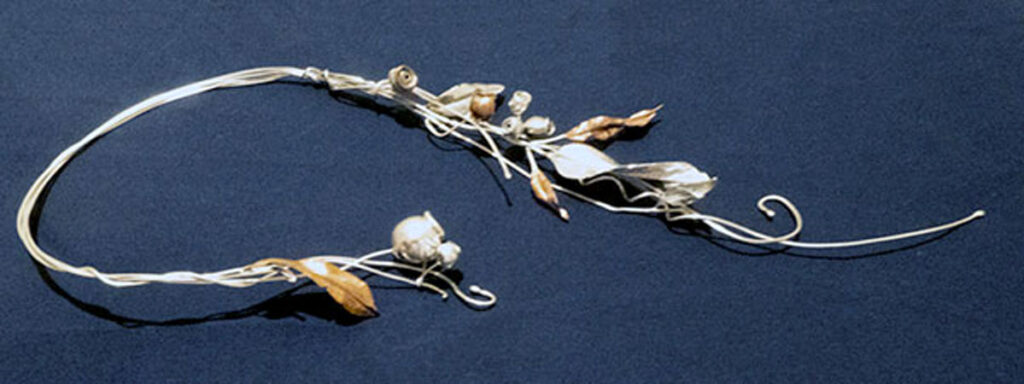Silver Smithing / Gold Smithing
As jewellery making, either with gold or silver, involves many different processes, there are basic skills which have to be learnt. A metalsmithing instructor is rostered on at several work sessions through the week.
To develop jewellery making skills and to gain familiarity with a range of tools like saws, files and pliers, new members are required to make two projects under instruction. Soldering is a prime component of each of these projects. Each project introduces new skills whilst reinforcing skills already attained.
The club has all of the necessary hand tools for the beginners to get started in their work. Material for each project can be purchased from the club.
Mild acid is used in conjunction with cleaning oxidation from metals, so it is advisable to wear old clothes or a cloth apron while metalsmithing.


Enamelling
NBLC has recently started enamelling on precious metals. Courses are run at intervals through the year when volunteer instructors are available. Enamelling is one of the oldest techniques of colouring and decorating metals, and exquisite examples of the art have survived from ancient cultures throughout the world.

Metal Casting
NBLC has a very active lost wax casting group. A work session is held on average each 6 weeks. Lost wax casting involves investing a wax model (ring, pendant, earrings) in a plaster cast, burning out the wax and then forcing molten metal into the mould cavity using a centrifuge. Mainly sterling or fine silver is used but some members prefer 9karat or 14 karat gold.

Cuttlefish Casting
In conjunction with lost wax casting, cuttlefish casting is also taught. This involves carving a jewellery item into cuttlefish bone and then pouring molten metal into the carving. As the heat destroys the cuttlefish each piece is a one off jewellery item. The pieces also have a varying texture depending on the cuttlefish used.
